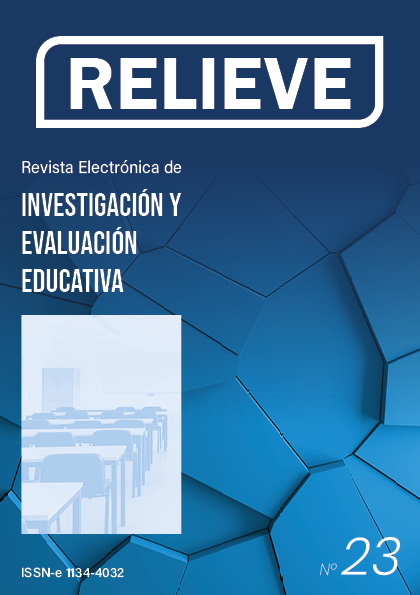Behaviour of product-moment and tetrachoric-polychoric correlations in ordinal scales: a simulation study
DOI:
https://doi.org/10.7203/relieve.23.2.9476Keywords:
Simulation, Multivariate analysis, correlation analysis, Product-moment correlation, Tetrachoric correlation, Polychoric correlation, Measurement, Attitude scaleAbstract
The statistical multivariate analysis of Likert response scales, given their widespread use, is a controversial issue in the scientific community, mainly from the specification of the problem of measurement. This work aims to study various conditions of these ordinal scales affect the calculation of the product-moment and tetrachoric-polychoric correlation coefficients. For this purpose, a simulation study was applied in which 90 databases with 10 items each were generated. In the estimation of the databases, the following variables were controlled: number of response categories, symmetrical or asymmetric distributions of data, sample size and level of relationship between items. Thus, 90 matrices (10x10) were obtained which included the difference between the product-moment and tetrachoric-polychoric correlations. The graphical and variance analysis show how the product-moment correlation coefficient significantly underestimates the relationship between variables mainly when the number of response categories of the ordinal scale is small and the relationship between the variables is large. On the other hand, the statistical estimation of both coefficients is very similar when the starting relationship between pairs of variables is small and/or when the number of response options of the variables is greater than 5. The study concludes by making a recommendation to the applied researcher on the most appropriate correlation coefficient depending on the type of data available. Finally, the results are discussed from the previous studies, which reach some similar conclusions.
Downloads
Downloads
Published
How to Cite
Issue
Section
License
The authors grant non-exclusive rights of exploitation of works published to RELIEVE and consent to be distributed under the Creative Commons Attribution-Noncommercial Use 4.0 International License (CC-BY-NC 4.0), which allows third parties to use the published material whenever the authorship of the work and the source of publication is mentioned, and it is used for non-commercial purposes.
The authors can reach other additional and independent contractual agreements, for the non-exclusive distribution of the version of the work published in this journal (for example, by including it in an institutional repository or publishing it in a book), as long as it is clearly stated that the Original source of publication is this magazine.
Authors are encouraged to disseminate their work after it has been published, through the internet (for example, in institutional archives online or on its website) which can generate interesting exchanges and increase work appointments.
The fact of sending your paper to RELIEVE implies that you accept these conditions.














